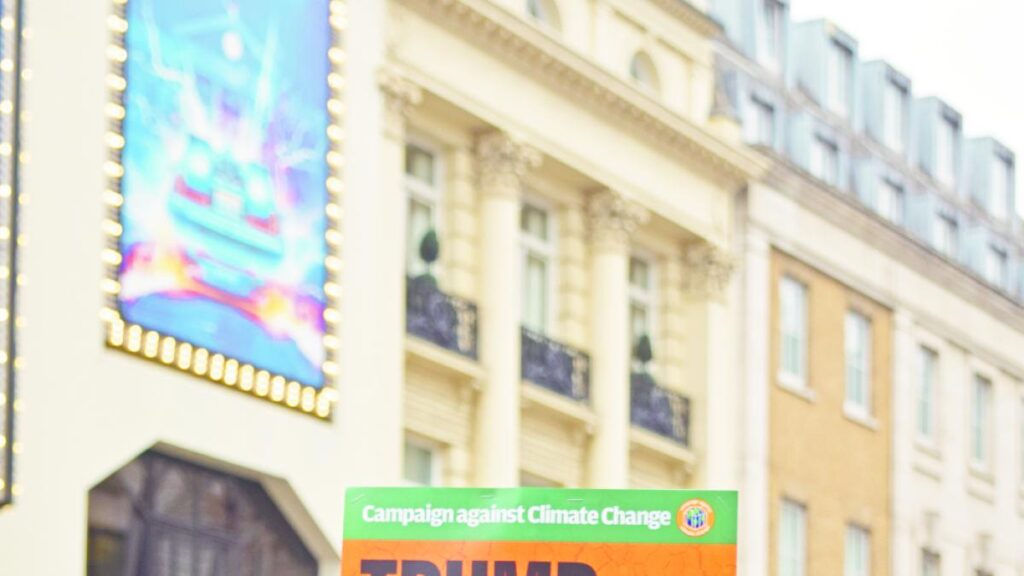Introduction
In 2021, during the United Nations Climate Change Conference (COP26) in Glasgow, Mark Carney was a prominent figure in the financial world. At that time, he was later appointed as Canada’s Prime Minister, largely due to a call from then U.S. President Donald Trump for Canada to become the 51st state.
Carney’s Green Finance Initiative
At COP26, Carney announced the creation of the Glasgow Financial Action Network for Net Zero (GFANZ), which would give birth to three early offspring: the Bankers for Net Zero Alliance (NZBA), the Insurance Alliance for Net Zero (NZIA), and the Asset Managers for Net Zero Initiative (NZAM).
Skeptics saw it as mere window dressing, but Carney assured a watchful world that “it’s not just blah blah blah,” and that the concept of net-zero emissions would be the “critical infrastructure of the new financial system.”
The Evolution of GFANZ’s Offspring
However, time has not been kind to Carney’s letter-writing. Early this year, the largest U.S. banks (JP Morgan, Goldman Sachs, and others) withdrew from the NZBA, evidently fearing political pressure from the new Trump administration.
Canadian banks followed suit, showing little loyalty to the creation of their future Prime Minister. By April, remaining members diluted initial commitments, setting a new criterion of a maximum 2°C temperature rise (instead of the now irrelevant 1.5°C) and abandoning the goal of net-zero emissions by 2050.
HSBC announced its departure in July, and more defections seem likely. Today, members represent slightly more than half of the founders’ assets; however, some banks remain committed, and the NZBA still exists.
The NZIA fared worse. Even before Trump’s election, some state attorneys general, questioning the joint climate goal formulation, accused leading members of collusion. Though their motives may have been different, they had a valid legal argument: the founders hadn’t thoroughly analyzed what their joint commitment formulation implied.
After a series of withdrawals, the NZIA collapsed in April 2024.
A substitute emerged, the Transition Forum for Insurers to Net Zero Emissions, with members subject to more obligations and without mandatory goal formulation or information disclosure. The forum also claims to have internal legal counsel monitoring for potential future antitrust violations.
To complete the family, the third child (NZAM) also experienced a barrage of withdrawals in January, led by BlackRock, causing the suspension of activities and cancellation of the public signatory list. It’s unclear when, if ever, the suspension will end.
While we’ve discussed the children; what of the mother?
Technically, GFANZ still exists but has undergone substantial remodeling. Now described as an independent “board of directors” without entry preconditions, it no longer aims to safeguard the net-zero emissions objective but facilitate green energy transition financing, a praiseworthy task, though far from the initial vision.
The Impact on Green Finance
It’s challenging to see anything other than a significant weakening of the financial sector’s commitment to supporting the green transition in all these events taken together.
But where are the regulatory authorities who pressured them to meet the climate change challenge and be part of the solution instead of future victims?
Regulatory Authorities’ Role
In 2017, eight central banks formed the Network for Greening the Financial System (NGFS), a “coalition of volunteers” including the UK, France, and China but not the U.S. The Federal Reserve, ever proud of its political independence, joined after Joe Biden’s 2020 electoral victory but withdrew early this year.
However, other central banks remain committed. Some (like the Bank of England) downplayed climate stress tests, but NGFS members (now around 147) haven’t abandoned the belief that rising average temperatures imply economic disruption risks, and the energy transition will create winners and losers.
A recent NGFS analysis suggests climate-related economic risks are greater than previously thought. If banks and insurers fail to grasp the stakes, they could suffer negative effects, adding financial instability to other threats.
However, no one should believe the rest of the world can continue as before. There are clear signs that the U.S. is pressuring international regulatory bodies to downplay their climate work.
The latest statement from the Financial Stability Board (FSB) indicates that “while many members believe more needs to be done, some think the work accomplished so far is sufficient,” and it seems “some” have overruled “many.” The Basel Committee also downgraded its climate-related information publication work and eliminated compliance obligations.
Although the Basel Committee rejected a U.S. request to disband its climate working group, it appears U.S. representatives no longer attend meetings, evidently reducing their effectiveness.
The Path Forward
Scientific evidence shows that the global warming impact on the financial sector grows daily, but U.S. resistance to resulting corporate or regulatory action becomes firmer.
When an irresistible force meets an immovable object, predicting the outcome is difficult. In this case, I bet on the irresistible force. There will likely be an incident (perhaps first in the insurance sector) that teaches us about reinforcing defenses. However, regulatory authorities outside the U.S. must continue to apply pressure.
The Author
Howard Davies, former Deputy Governor of the Bank of England, is Chairman of NatWest Group.
Translation: Esteban Flamini
Copyright: Project Syndicate, 2025
www.project- syndicate.org






